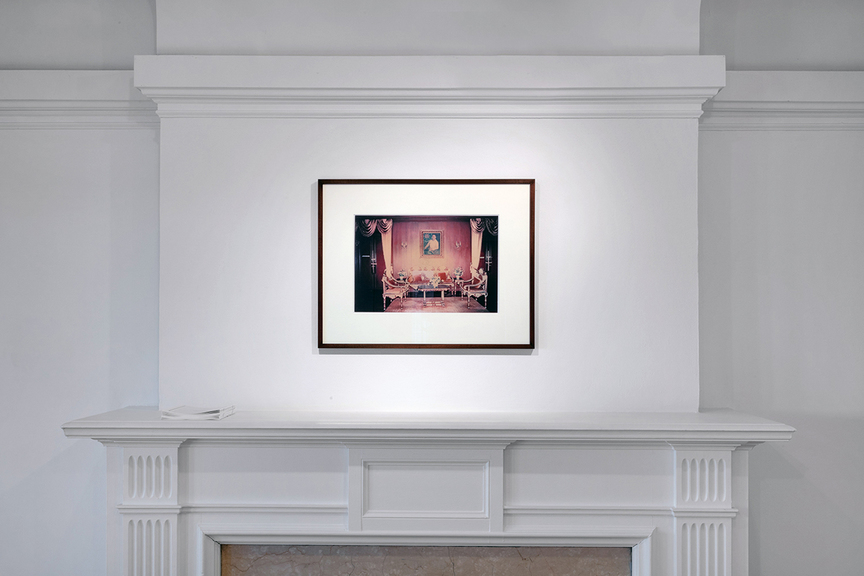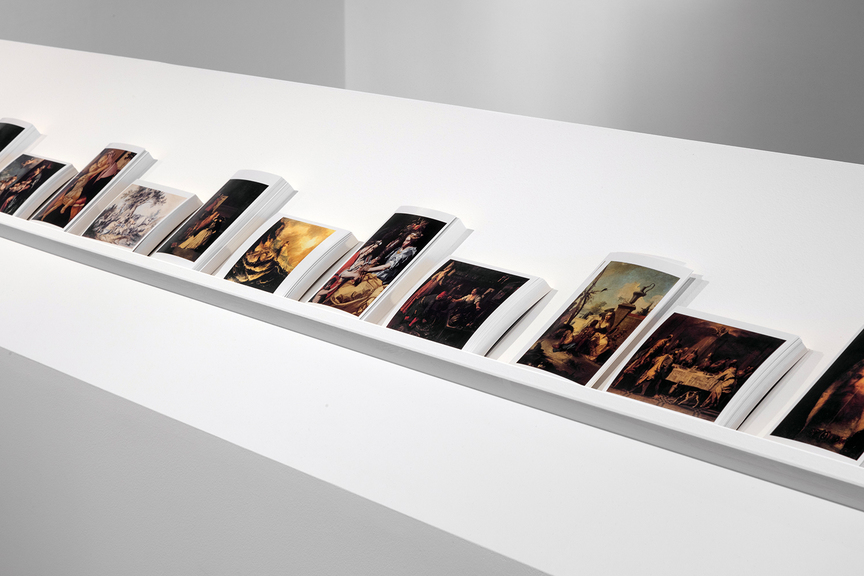-
From Current Issue
-
- Editor’s Letter Fire in the Heart
- Reviews I Gusti Ayu Kadek Murniasih
- Reviews 11th Seoul Mediacity Biennale: “One Escape at a Time”
- Dispatch Networked China
- One on One Monira Al Qadiri on Yukio Mishima
- Essays The rise of independent art spaces in pandemic-era Shanghai
- Features Tuan Andrew Nguyen
- Table of Contents
- Web Exclusives
- Archive
- Subscribe

R
E
V N
E
X
T
Installation view of PIO ABAD’s “Splendour” at Oakville Galleries, Toronto, 2019. All photos by Laura Findlay; courtesy the artist and Oakville Galleries.
For his first solo exhibition in Canada, “Splendour,” Pio Abad set a stage upon the Oakville Galleries in Gairloch Gardens. Building on the Galleries’ idyllic domestic setting, a replica of author HG Wells’s country home in Surrey, he produced a series of indictments related to sociopolitical histories of decay and turmoil, reconstituting access and demanding accountability for material objects and their appropriative significations.
Abad toyed with the rhetorical strategies of the Galleries’ domestic architecture, eschewing the use of actual decorative objects and furnishings. Instead, a series of photographic vinyl prints was spread upon the walls, floors, and nooks of the exhibition space. Titled Splendour (2019), the work carefully documents the interiors of Nicolae and Elena Ceaușescu’s former residence, Palatul Primaverii. The scenes, at once palatial and derelict, include a shot of the Ceaușescus’ closet spilling with fur coats, and an image of their Golden Bath, where everything from the faucets to the toilet was gilded in gold, while a print of Elena’s lavish shoe collection was laid on the floor of the entryway. Infamous for their cult personalities and melodramatic rise and fall as heads of Romania’s communist regime, the Ceaușescus’ kleptocratic reign was one of opulence left for abandon. This may also evoke Ferdinand and Imelda Marcos, the political powerhouse after which “conjugal dictatorship” is named. Abad has been transparent about the influence of the sociopolitical paradigms in the Philippines on his practice; his parents were activists and later politicians who openly defied the Marcos dictatorship. An Untitled photograph by Abad’s father sat above the fireplace mantel, surrounded by the images of the Caeușecus’ riches. The photo, showing an ornate living room, was taken in 1986 at the Marcos’ Malacañan Palace, before they fled the Philippines on charges of fraud and embezzlement. Conflating various exemplars of political impunity, Abad tussled at the deep entanglements of recursive collapses.
Abad’s skewering of abusive power was extended in It Seems We have Developed a Taste for Each Other’s Weaknesses (2019), a recreation of Not a Shield, but a Weapon (2016). Where the original installation comprised pristine, ten-by-ten rows of counterfeit handbags produced in the likeness of Margaret Thatcher’s black Asprey, the edition at the Galleries’ saw the bags hoarded into a sedimented pile. Tired and worn of their economic and political complicity, they have become artifacts to the global disarray of the past three years.
Contesting documentary truth and tradition, Abad’s exhibition demanded a critical realism and examination of the ramifications of the historical affairs in question. The exhibition catalogue, of his design, delineates the works in the show with his essays and excerpts of newspaper articles contemporaneous to the depicted events. The tones of these didactic materials are fairly varnished in veracity if not indulgent in some of the spectacle of upheaval. Abad tends to reject narrative because he believes it can be co-opted to perform cultural fictions within dictatorships. Yet as part of his compelling critique, he hinged on these fictions, subverting them from self-serving narratives into populist resistance.
The element of disruption was evident in the widely reviewed The Collection of Jane Ryan & William Saunders (2014–19). Referencing the pseudonyms that the Marcoses took to register for their clandestine off-shore Swiss accounts, the work democratically invited the audience to perform retribution and redistribution of the Marcos’ collection of eminent European paintings in the form of replica postcards. Generous in intent, the work was also a farcical ploy that poked fun at the absurdity of opulence.
Suspending time and a set of antiquated values associated with artifact and collection, Abad’s exhibition nevertheless offered hints of the historical archive’s importance. While he presents grandiose social actors, Abad is less interested in the psycho-historical lineages that may connect contentious regimes, and, rather, is invested in peoples’ potential to refuse perpetrations. Abad understands the rhythms of memory inscription. He performs beleaguered, repetitive acts of documenting, piling, and reproduction—unravelling the chaos and complicity of the remnant and the idle.
Pio Abad’s “Splendour” is on view at Oakville Galleries, Toronto, until June 2, 2019.
To read more of ArtAsiaPacific’s articles, visit our Digital Library.



















